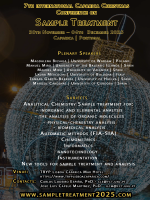Values for evaluating the nutritional status of water-soluble vitamins in humans
DOI: 10.5584/jiomics.v3i1.130
Abstract
Previously, we clarified that the amount of urinary excretion of water-soluble vitamins closely reflects the surplus amount of water-soluble vitamins in the body stores of rats and humans. We tried to set a tentative amount of urinary excretion of eight water-soluble vitamins of nine water-soluble vitamins (except vitamin B12) for maintaining health based on experiments in healthy young females administered a semi-chemically defined diet according to Japanese Dietary Reference Intakes and related data. We proposed a tentative value for the amount of urinary excretion of water-soluble vitamins for maintaining health. The values were: 200–2000 nmol/d for vitamin B1; 200–2000 nmol/d for vitamin B2; 2–15 µmol/d for 4-pyridoxic acid (a catabolite of vitamin B6); 50–300 µmol/d for the sum of the nicotinamide catabolites N1-methylnicotinamide, N1-methyl-2-pyridone-5-carboxamide, and N1-methyl-4-pyridone-3-carboxamide; 10–30 µmol/d for pantothenic acid; 15–100 nmol/d for folate; 50–200 nmol/d for biotin; and 100–2000 µmol/d for vitamin C. By using these values, we attempted to evaluate the nutritional status of water-soluble vitamins for 709 young Japanese females. The percentage within the tentative value of urinary excretion of water-soluble vitamin for maintaining health was 73.6% for vitamin B1, 63.5% for vitamin B2, 90.0% for vitamin B6, 85.6% for niacin, 58.1% for folate, 85.6% for pantothenic acid, 70.2% for biotin, and 65.4% for vitamin C. The percentage beyond the lower limit of detection was 22.4% for vitamin B1, 31.3% for vitamin B2, 6.2% for vitamin B6, 14.0% for niacin, 40.9% for folate, 12.4% for pantothenic acid, 26.2% for biotin, and 33.0% for vitamin C. The percentage over the upper limit of detection was 4.1% for vitamin B1, 5.2% for vitamin B2, 3.8% for vitamin B6, 0.4% for niacin, 1.0% for folate, 2.0% for pantothenic acid, 3.6% for biotin, and 1.6% for vitamin C. Nutritional assessment using urinary excretion amounts of water-soluble vitamins is persuasive, and leads to the transformation of habitual dietary intakes.









